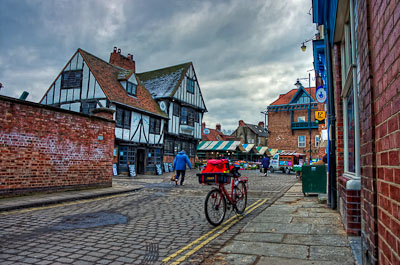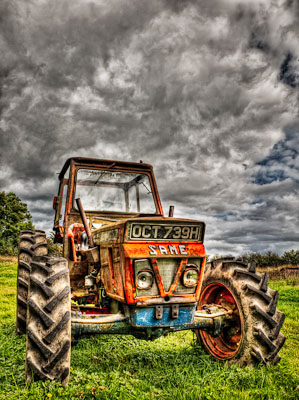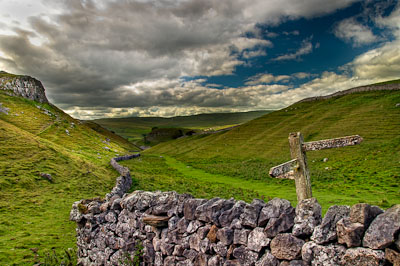For those of you that know me, or know of me, you will realise by now that I have a fascination for HDR (High Dynamic Range) Photography. This is where three or more images set to different exposures are combined into one final image, using software such as Photomatix, Dynamic Photo or the latest versions of Photoshop.
 HDR: Double Parked - 3 exposures created in Lightroom HDR has been a learning curve for me, and some of my early images are, well, overcooked is the term that is commonly used on the various forums etc. I tend to, these days, keep my HDR images more natural looking, but I do sometimes tend to venture over to the very dramatic side now and again. Sometimes the dramatic works better than the subtle approach, but then again, not always.
HDR: Double Parked - 3 exposures created in Lightroom HDR has been a learning curve for me, and some of my early images are, well, overcooked is the term that is commonly used on the various forums etc. I tend to, these days, keep my HDR images more natural looking, but I do sometimes tend to venture over to the very dramatic side now and again. Sometimes the dramatic works better than the subtle approach, but then again, not always.
You can create some wonderful effects with HDR Photography, as mentioned some over the top, and some natural - you can always combine the two to create something really different. Apart from using just HDR software such as Photomatix Pro, Dynamic Photo etc its also a good idea to play around with third party Plug-ins too.
 Take this image - it was taken last year on walk out - I came across it by chance, and the rustic look on it screamed HDR Fun!. I took the image with HDR in mind, but still only took one shot. The rest was done using a combination of Lightroom, Photomatix and a couple of third party filters namely Color Efex Pro's Tonal Contrast, and Topaz Adjust.
Take this image - it was taken last year on walk out - I came across it by chance, and the rustic look on it screamed HDR Fun!. I took the image with HDR in mind, but still only took one shot. The rest was done using a combination of Lightroom, Photomatix and a couple of third party filters namely Color Efex Pro's Tonal Contrast, and Topaz Adjust.
Nine exposures were created using Lightroom, exporting each image at different exposures but still in the native .NEF format.
Once the .NEF files were imported into Photomatix with one of my own presets, I then opened the image within Photoshop to use the third party plug-ins.
Because of the way the headlights and front grill look like a face I thought it warranted the surreal side of HDR.
There is another 'dark side' to HDR Photography - one where your images are more realistic - this is called Exposure Fusion.
It starts off with the same process as needing three or more auto bracketed (or made up) exposures, but rather than processing the image for the High Dynamic Range, Fusion simply takes the best bits out of the exposures and blends them together.
 This was a single exposure, taken whilst on a (newly found hobby of) walking through Conistone Dib in Yorkshire. I was practicing my composition skills and liked the photo when viewed on the computer, but it definitely lacked definition (didn't help that the sun was in the wrong place!) and need that little something extra.
This was a single exposure, taken whilst on a (newly found hobby of) walking through Conistone Dib in Yorkshire. I was practicing my composition skills and liked the photo when viewed on the computer, but it definitely lacked definition (didn't help that the sun was in the wrong place!) and need that little something extra.
See how much more natural it looks, but shows more definition and textures and detail it show in the stone work, grass and rocks?
Rather than write comprehensive tutorials/articles about HDR Photography, I have put together some "Workflow" articles - these are basically the steps I follow when creating my own HDR work. The articles explain the process from three exposures 'in camera', and from a single image (like the one above) and creating new exposures on the computer.
There will also be an article on shooting HDR from a compact camera (yes they can do auto bracketing too!).
I have reworked my HDR Galleries, at placed the more 'acceptable' HDR Images, and removed quiet a lot of the garish ones. However, I have left some of my early images in the gallery to show my progress in HDR Photography. You will now also find an Exposure Fusion Gallery - some images may appear in both the HDR & the Fusion galleries, so you can compare them yourself and decide which (if any) you like better.
External HDR Links
When you get a bee in your bonnet (so to speak) you turn to the internet to see how things work, look for explanations etc. Here are a couple of links I think are invaluable if you are wanting to get your teeth into HDR Photography

